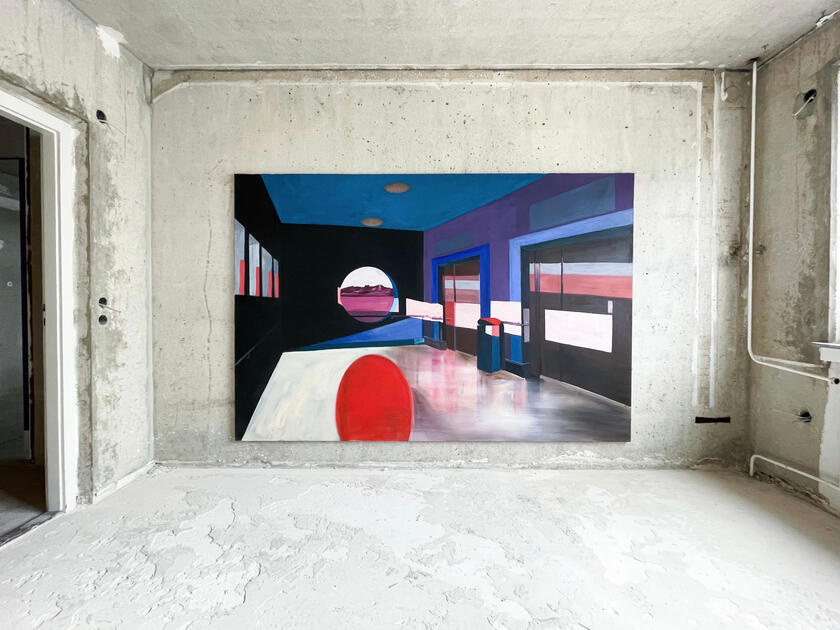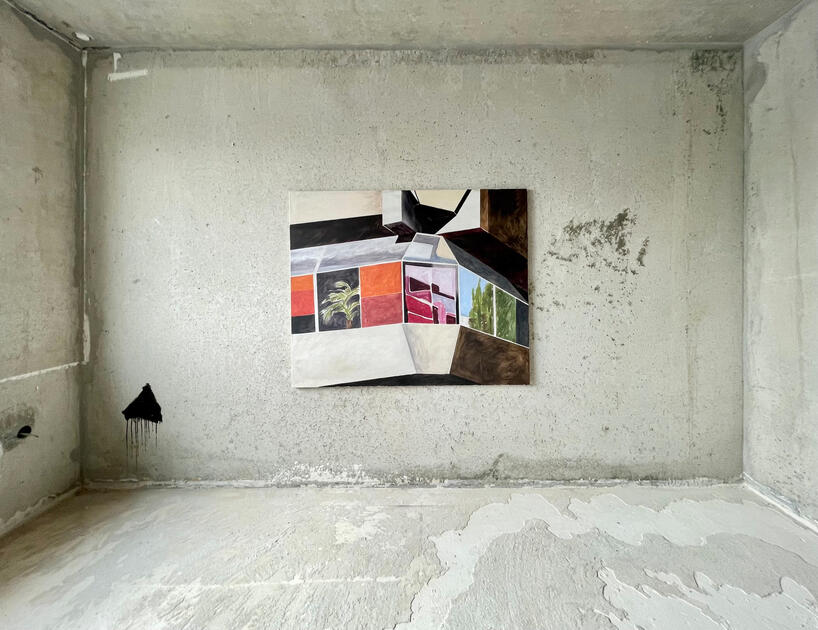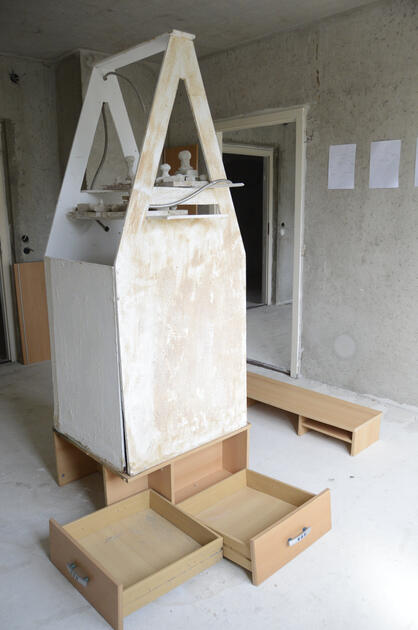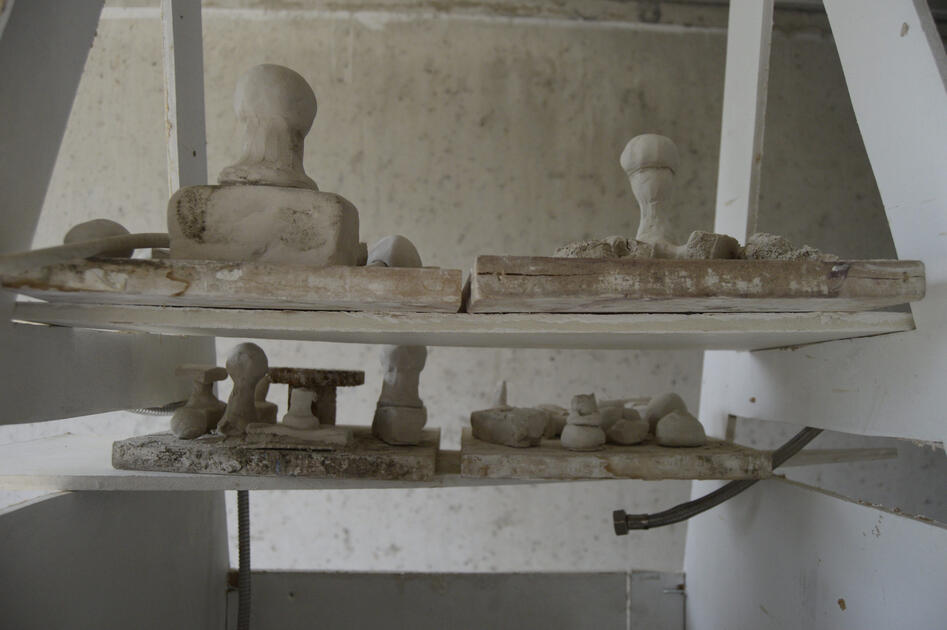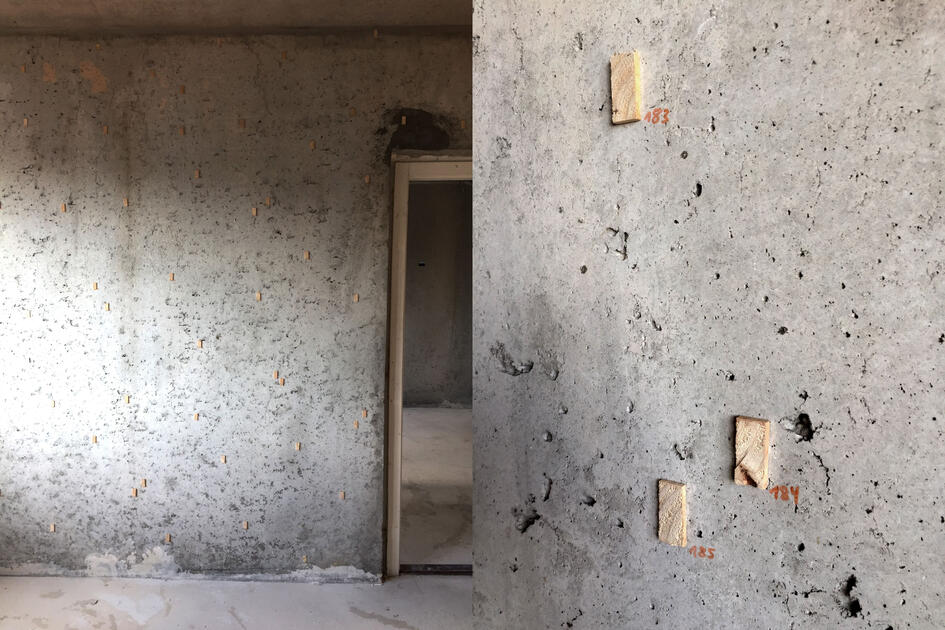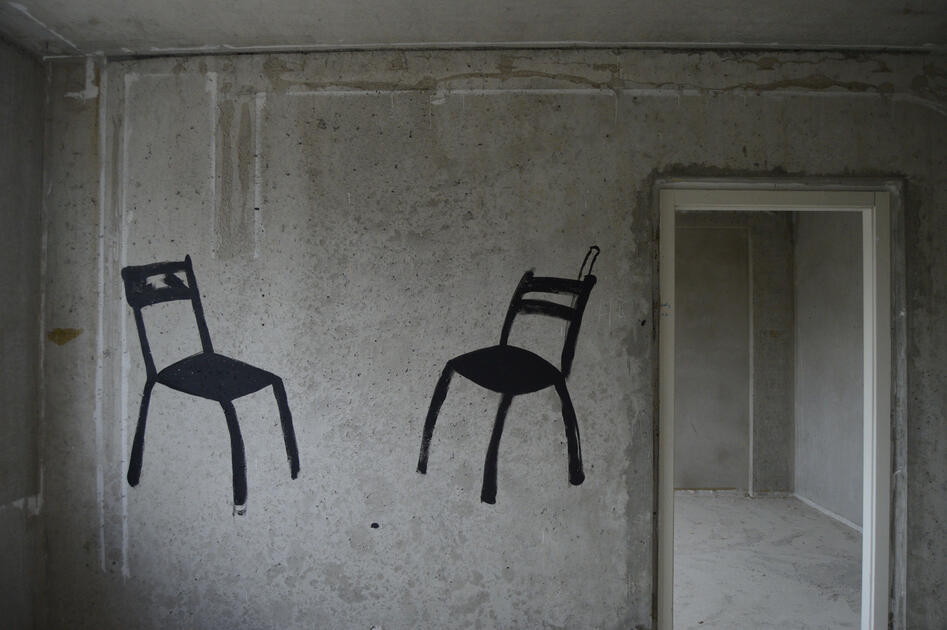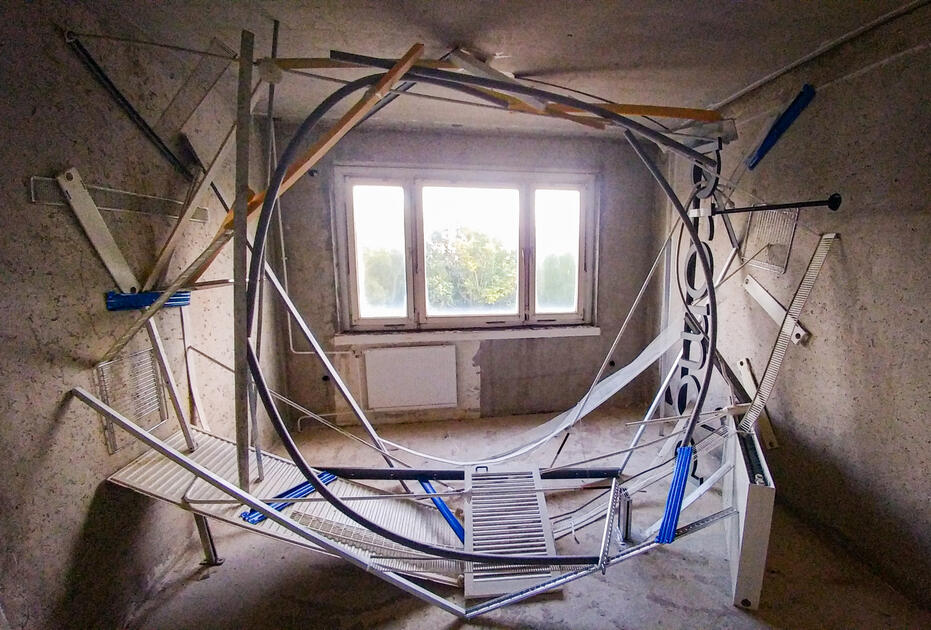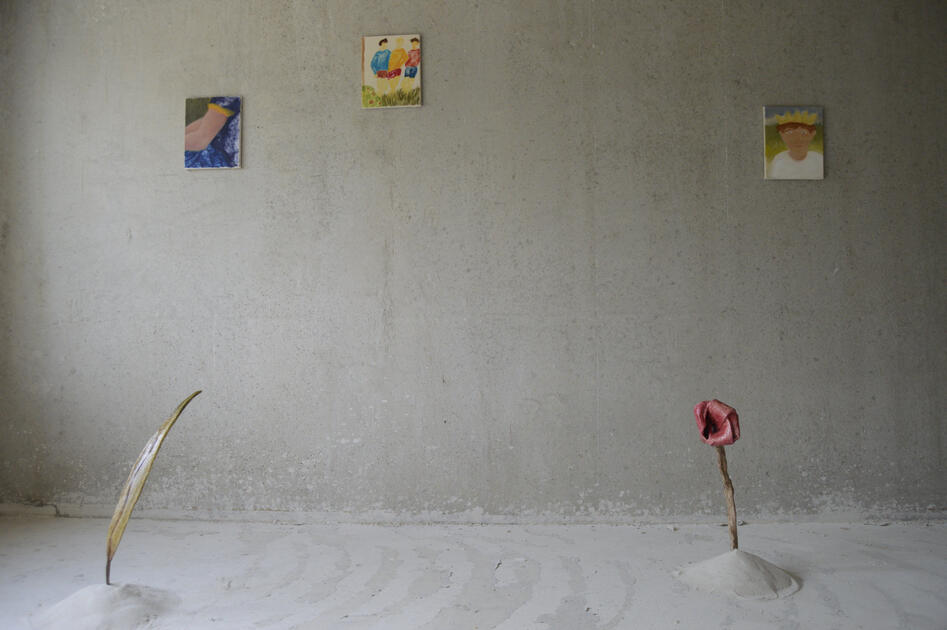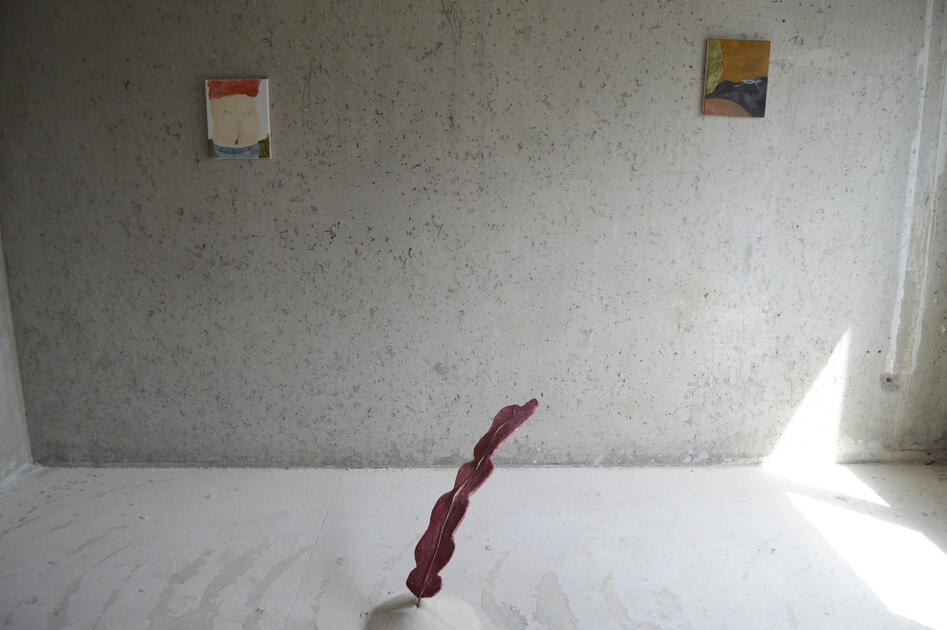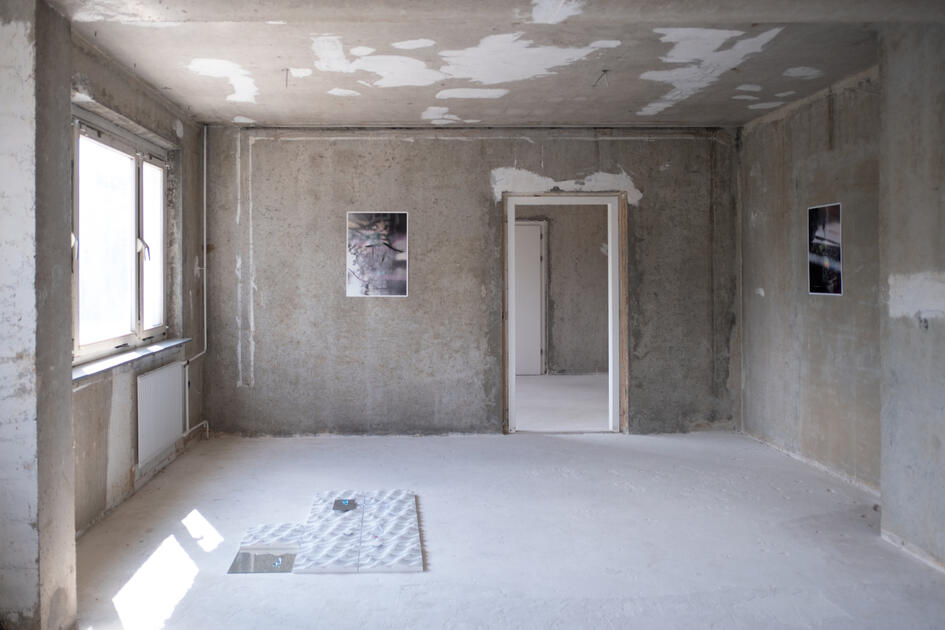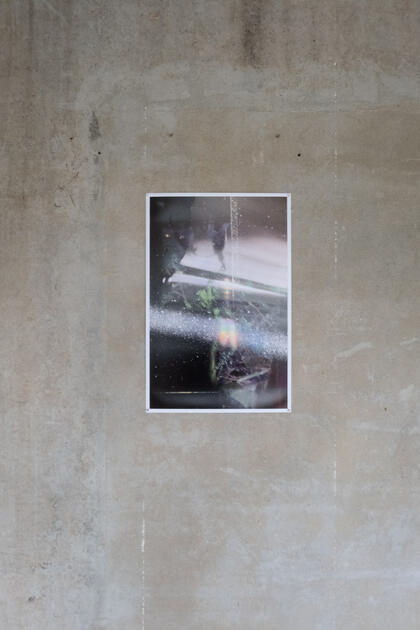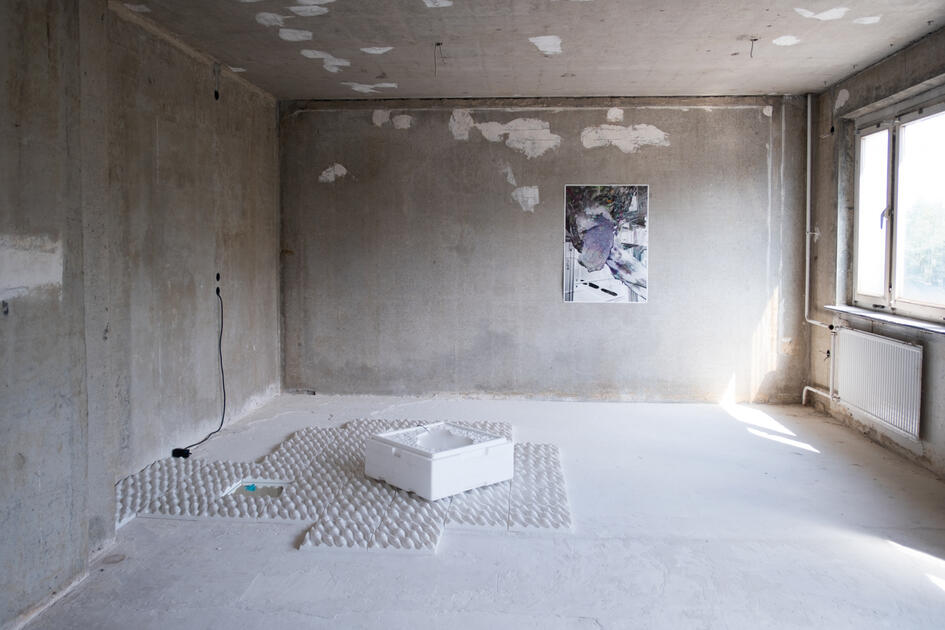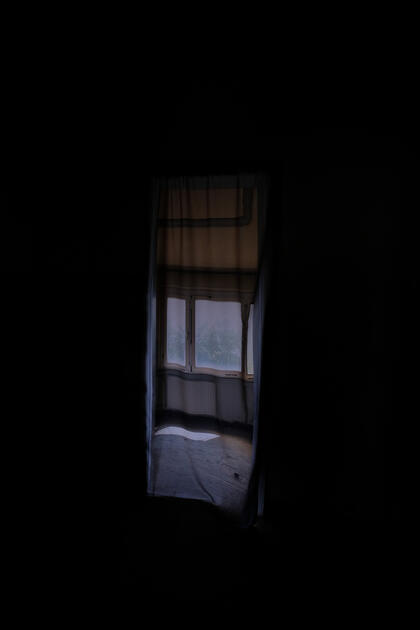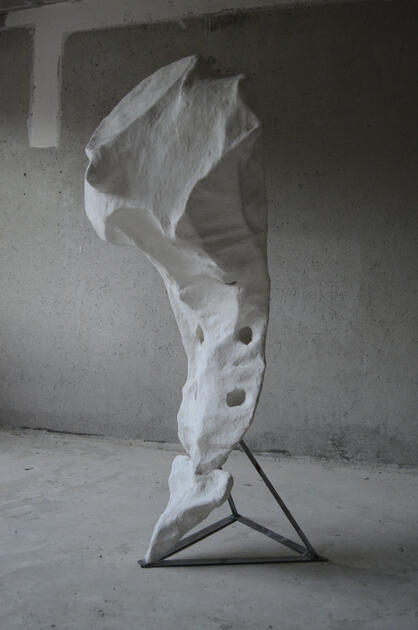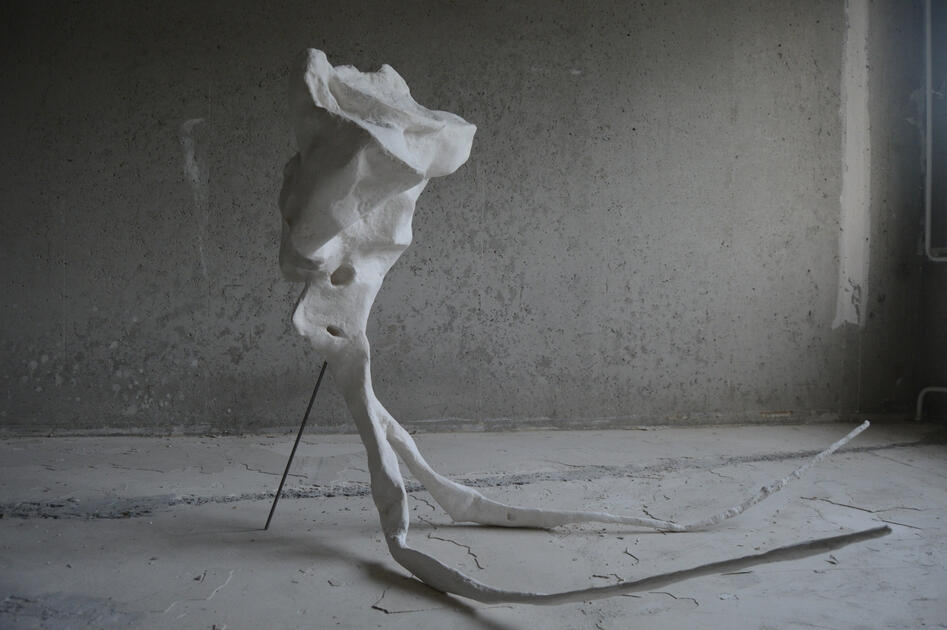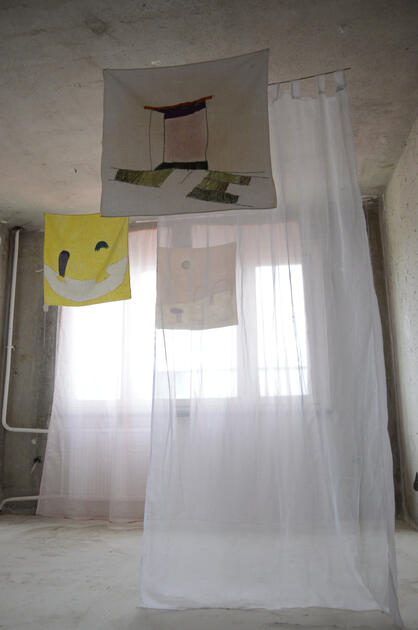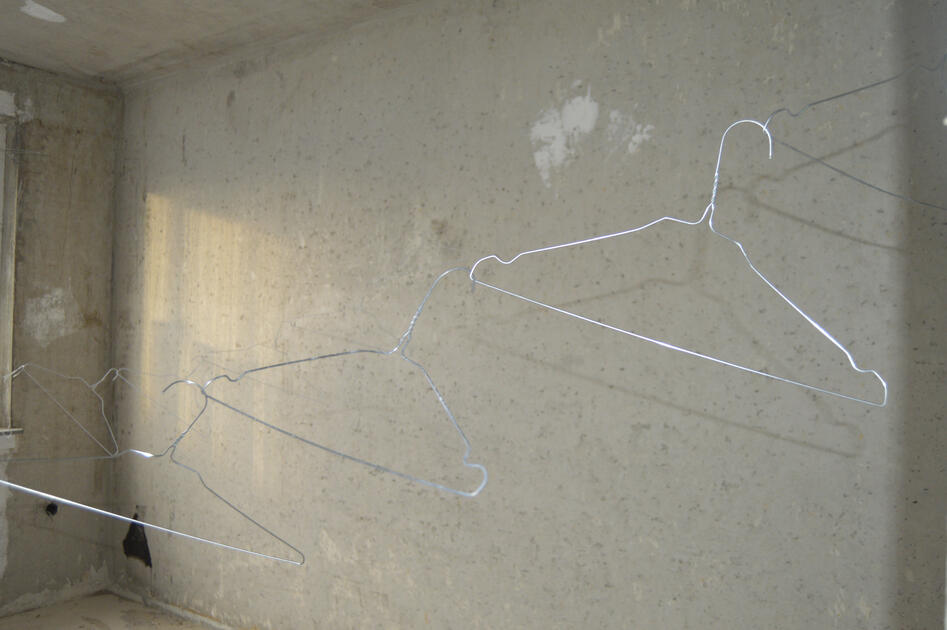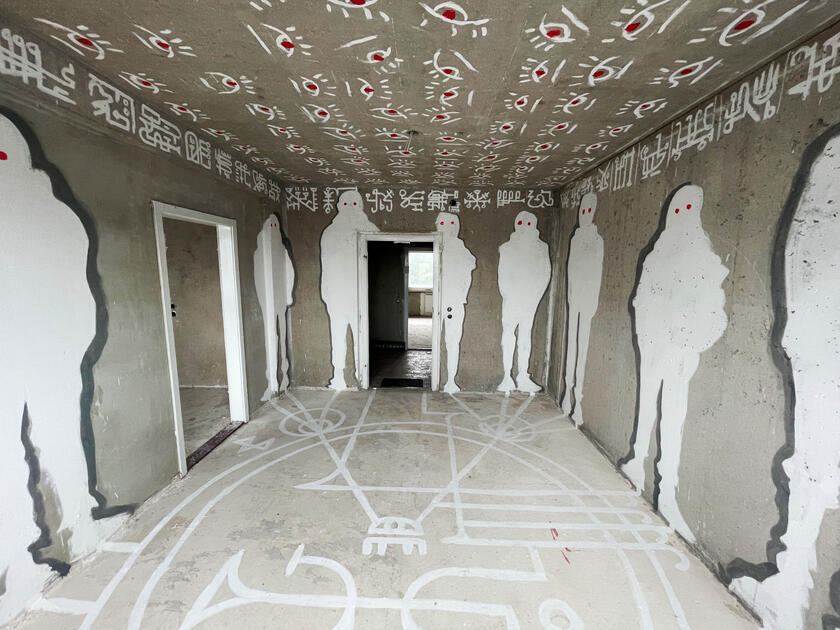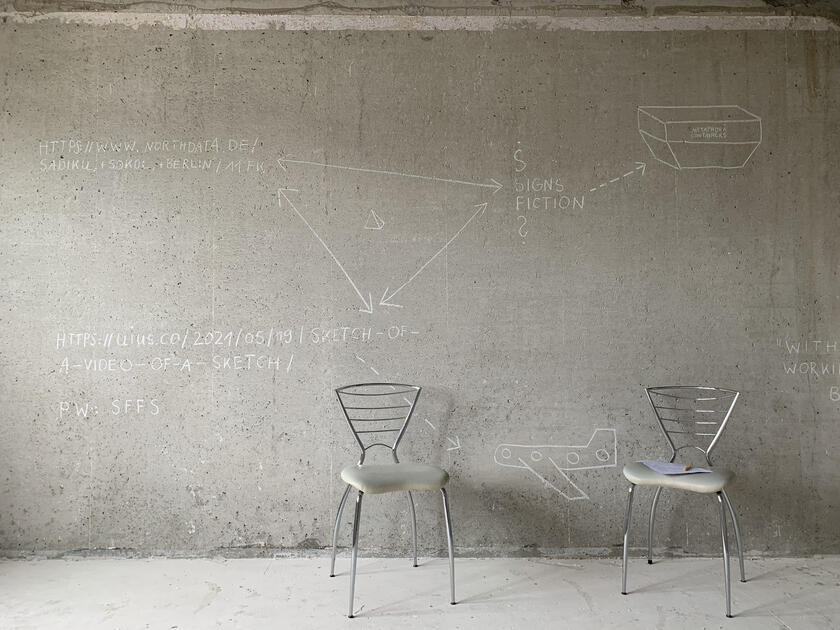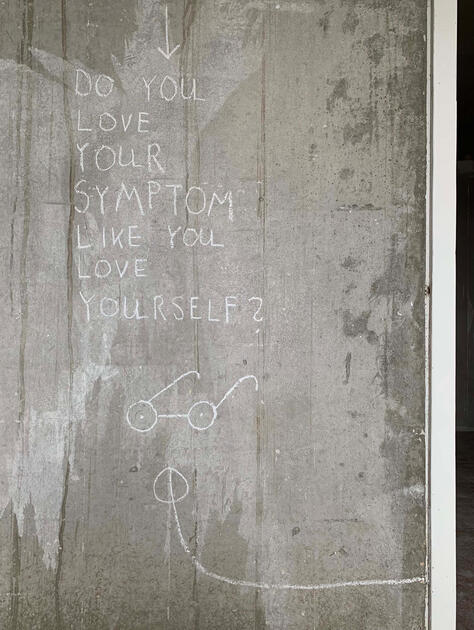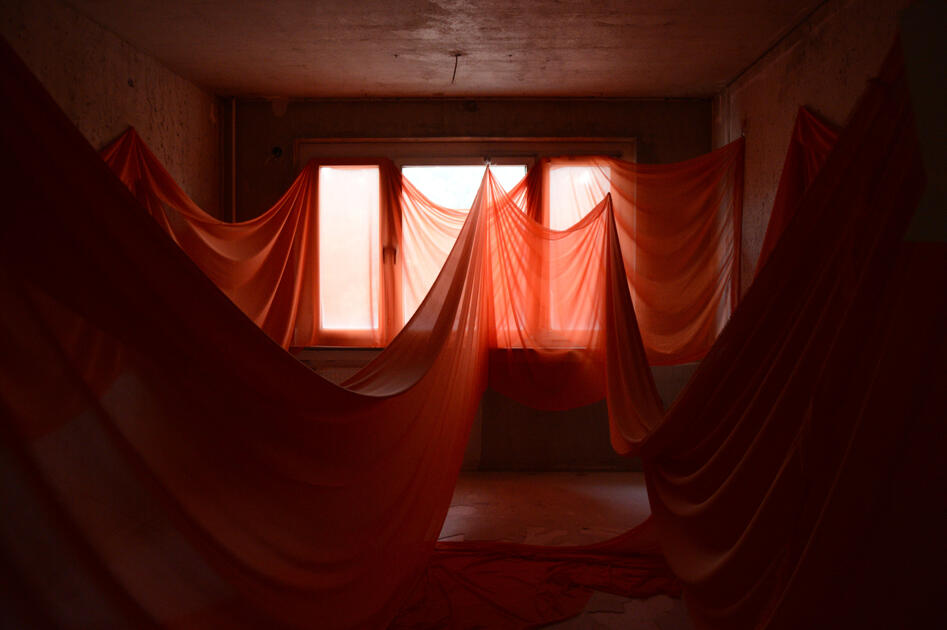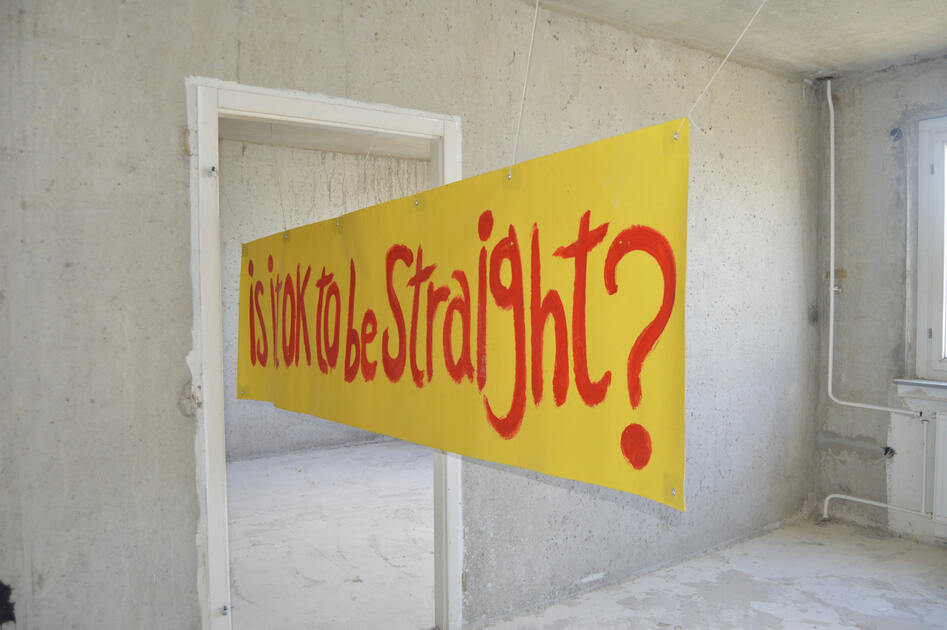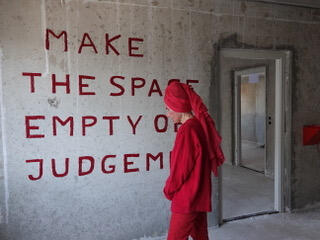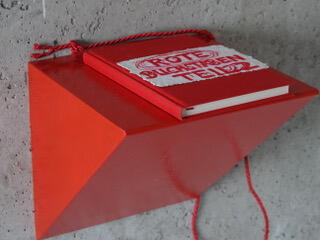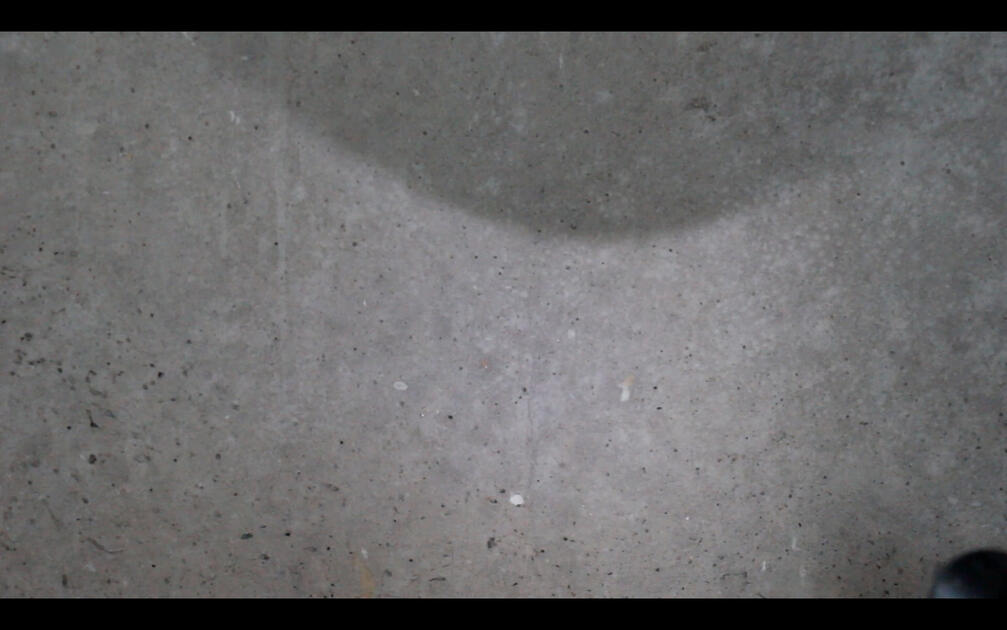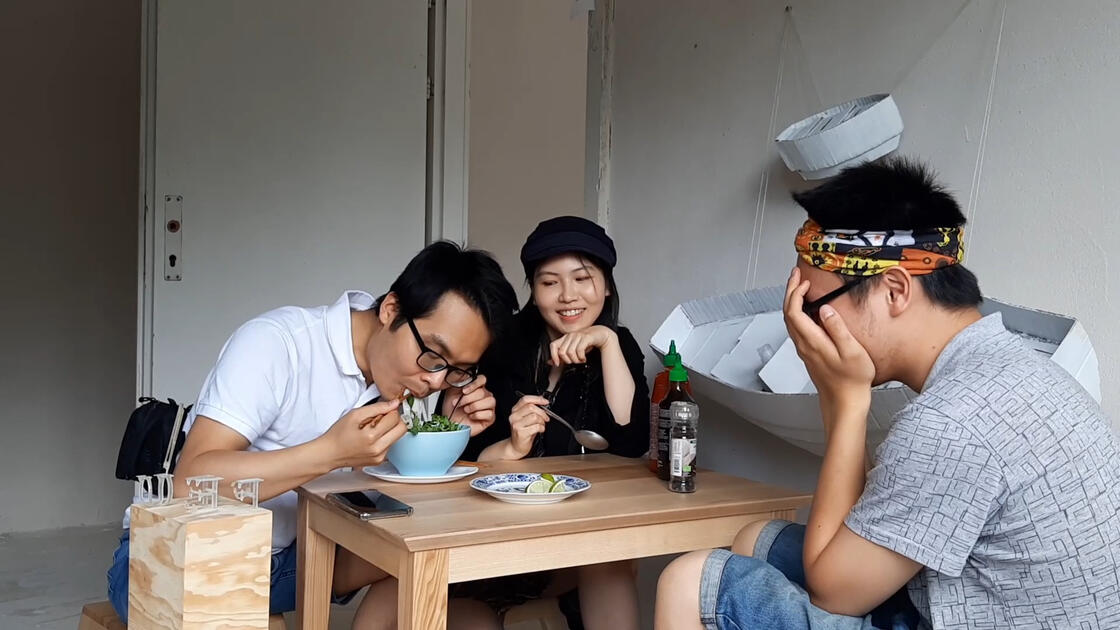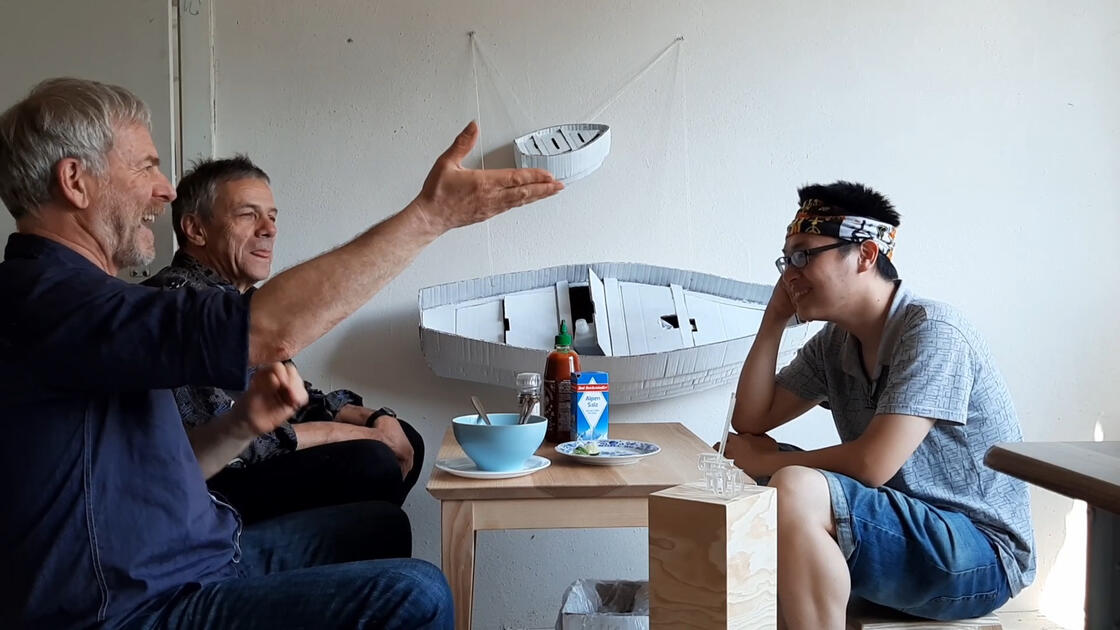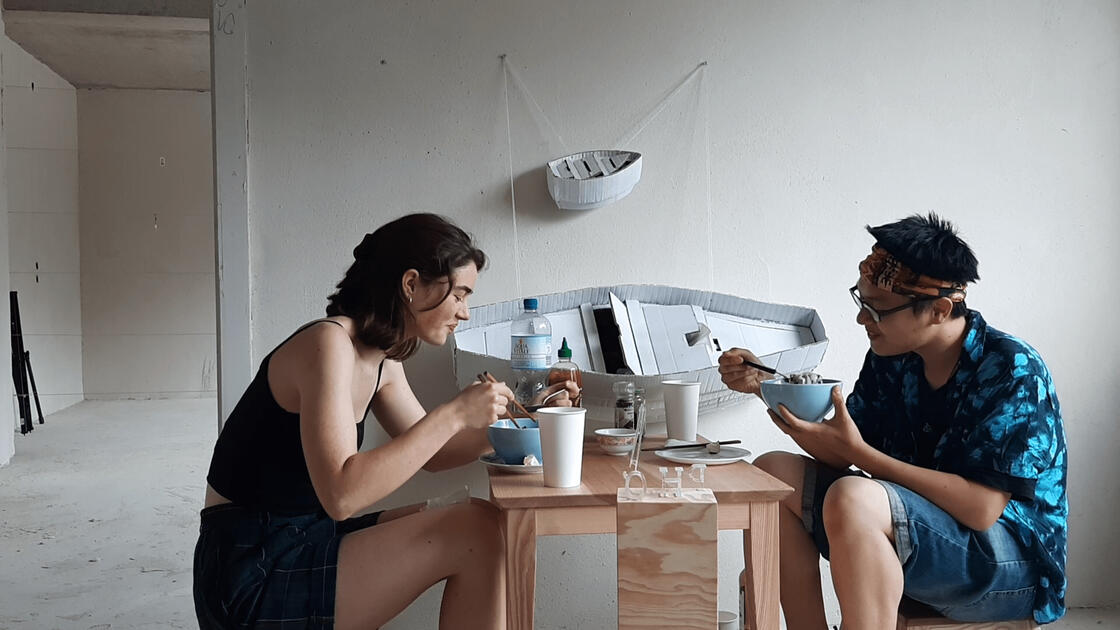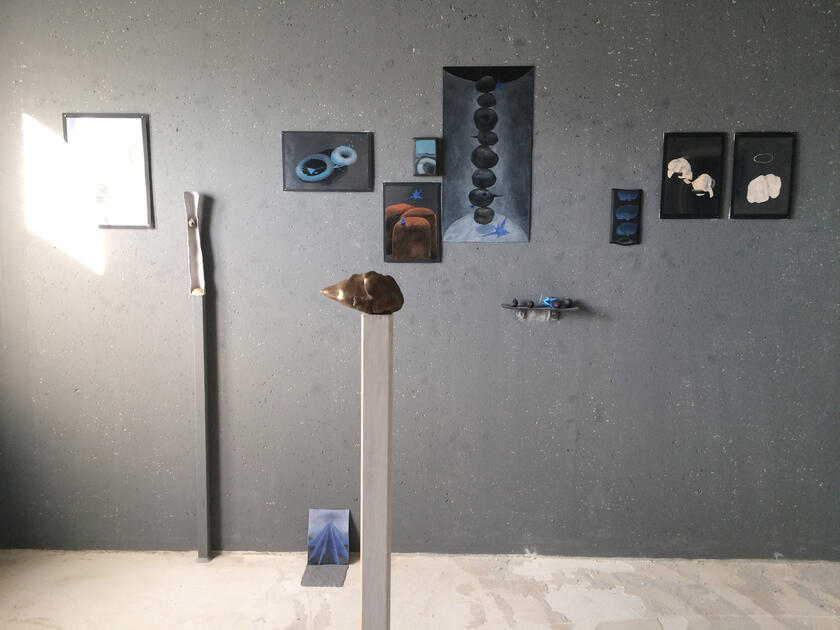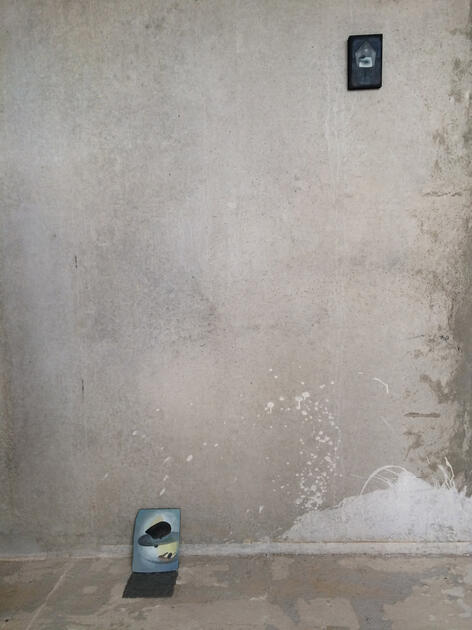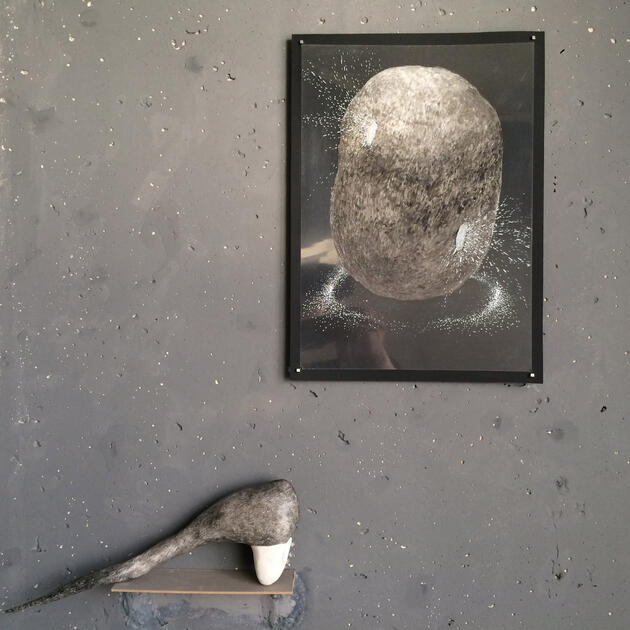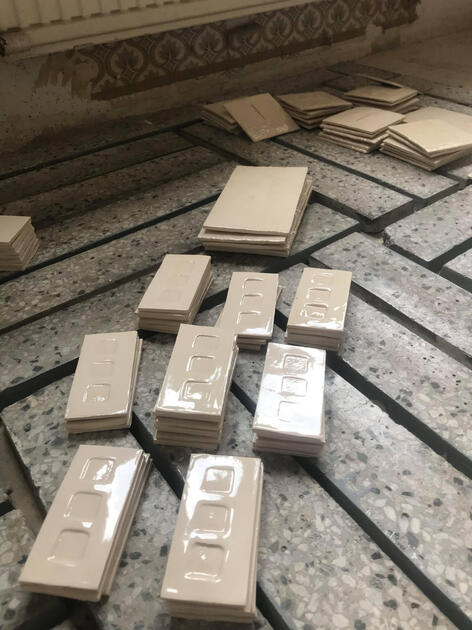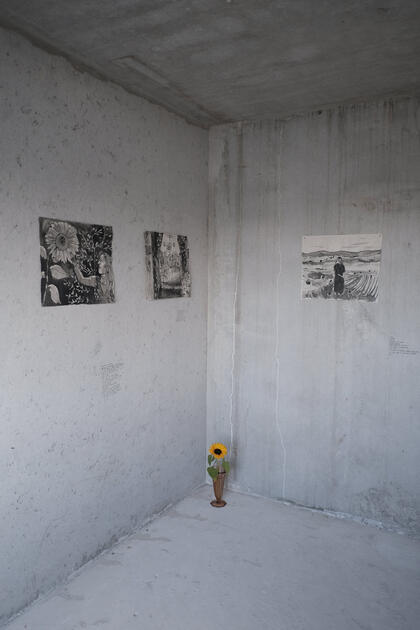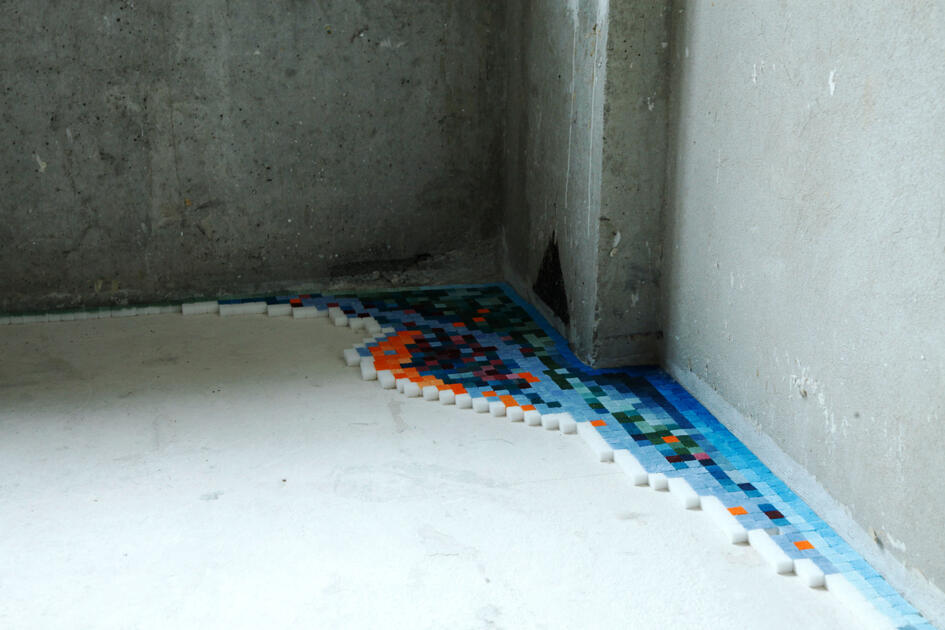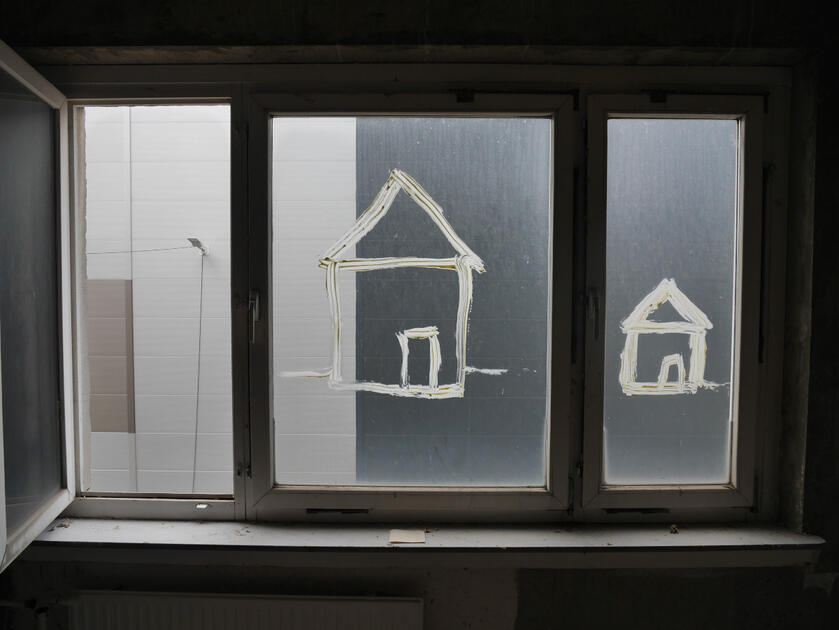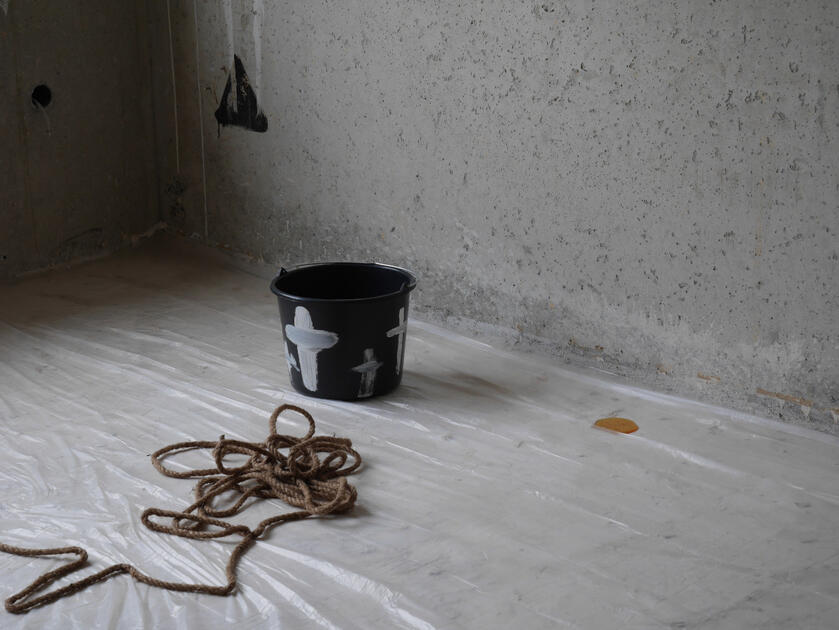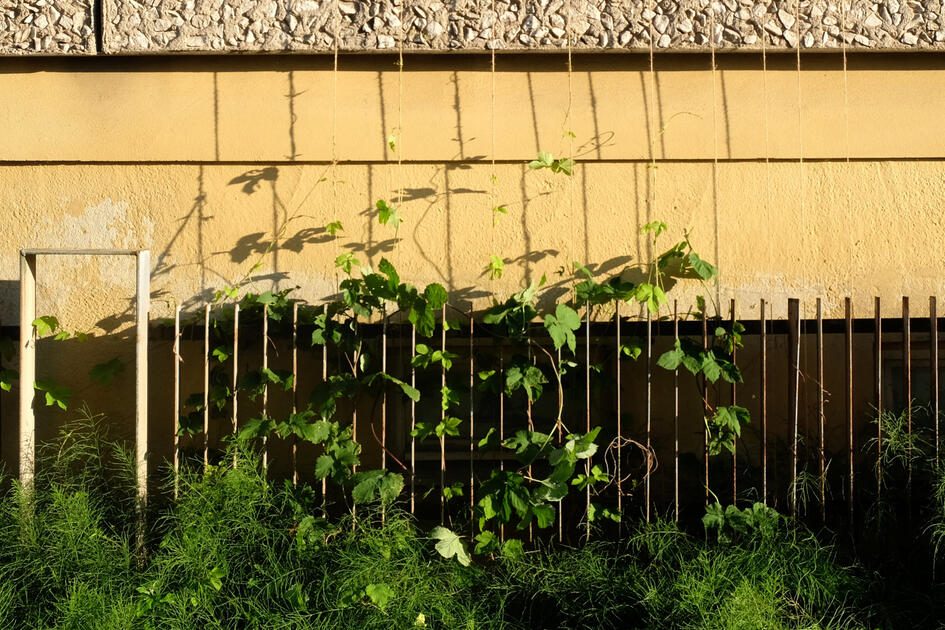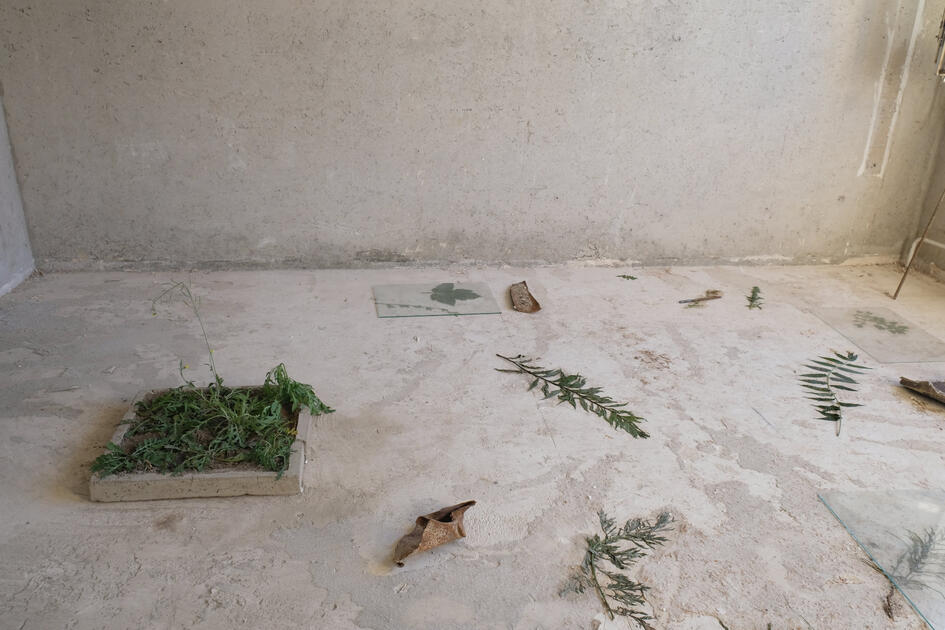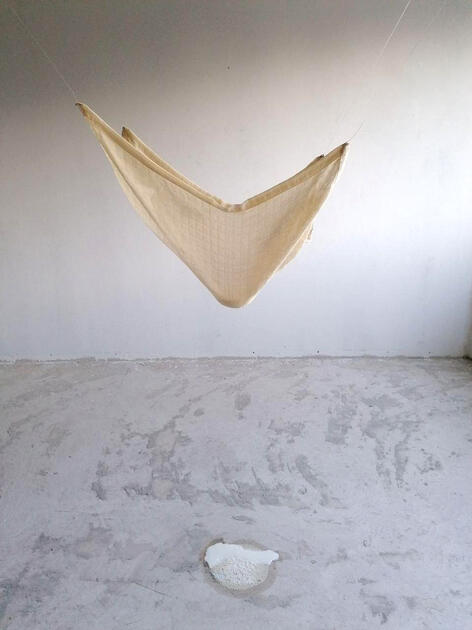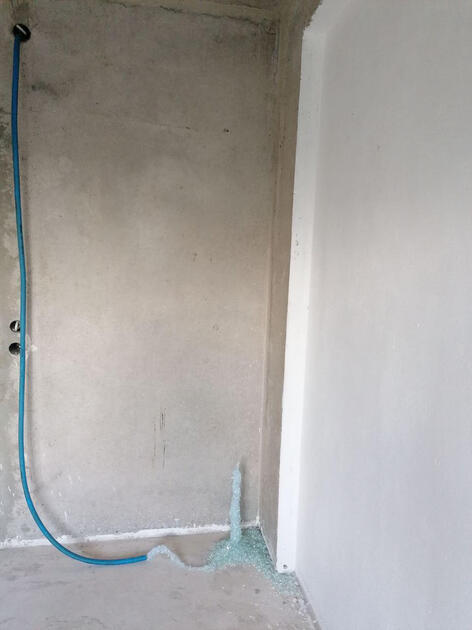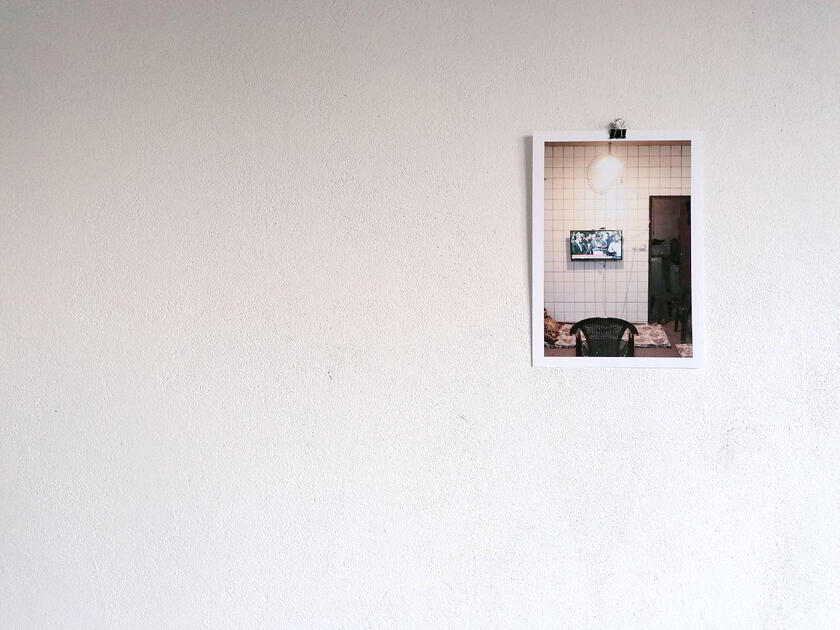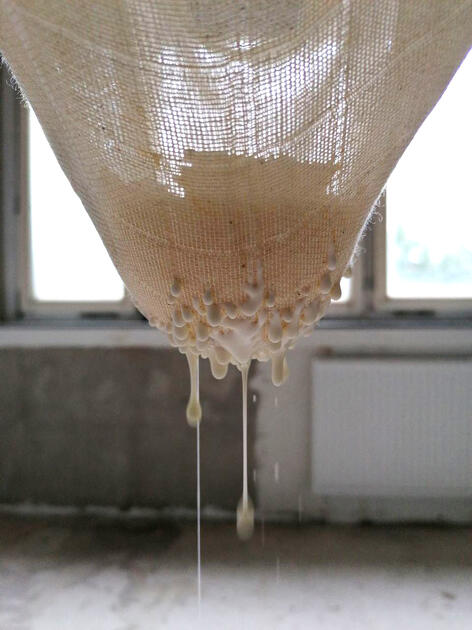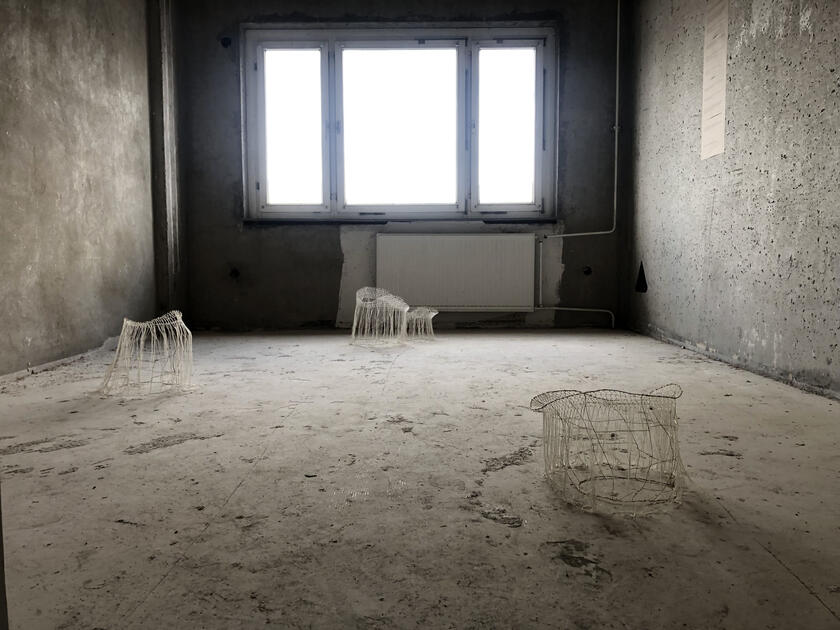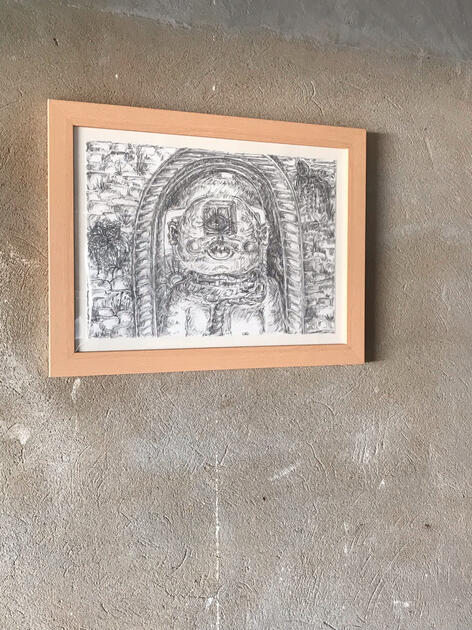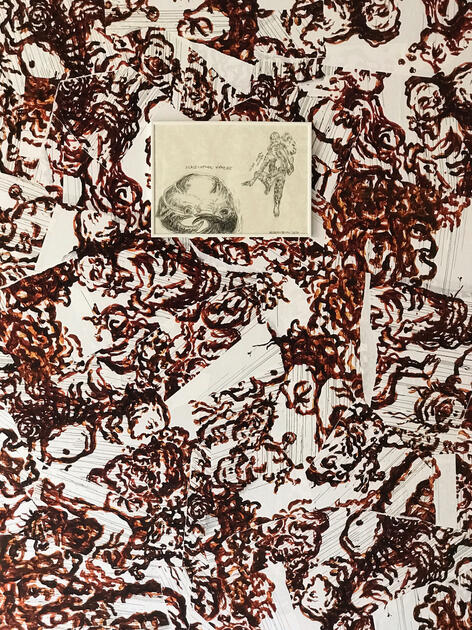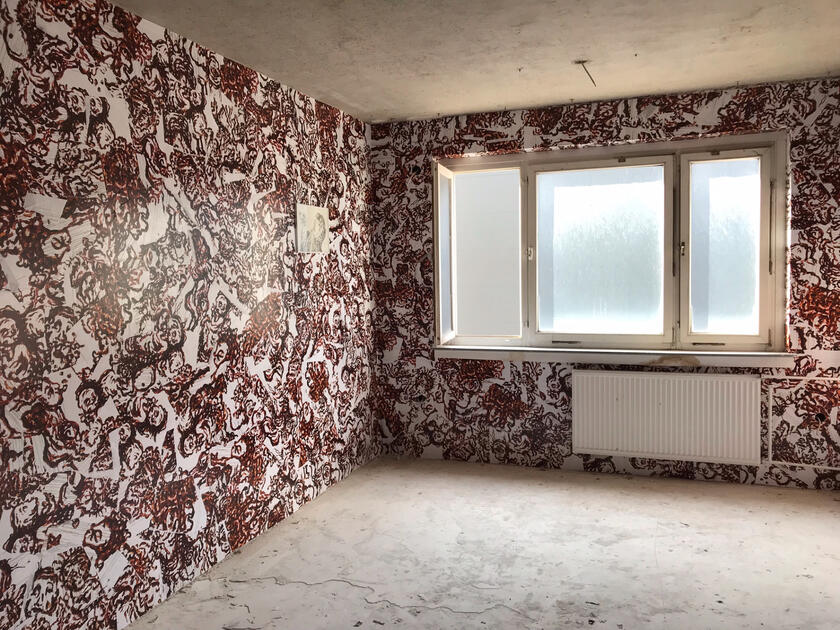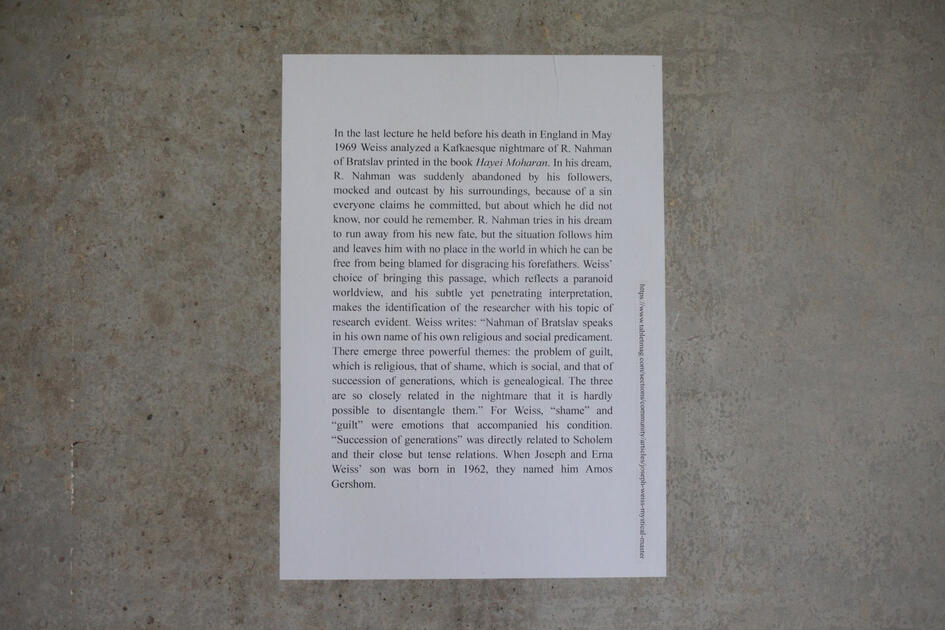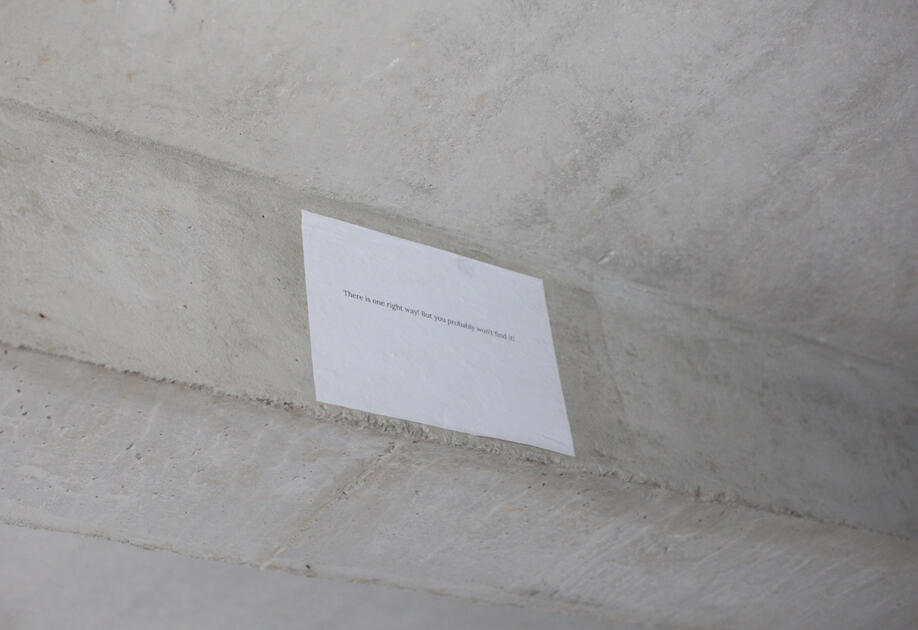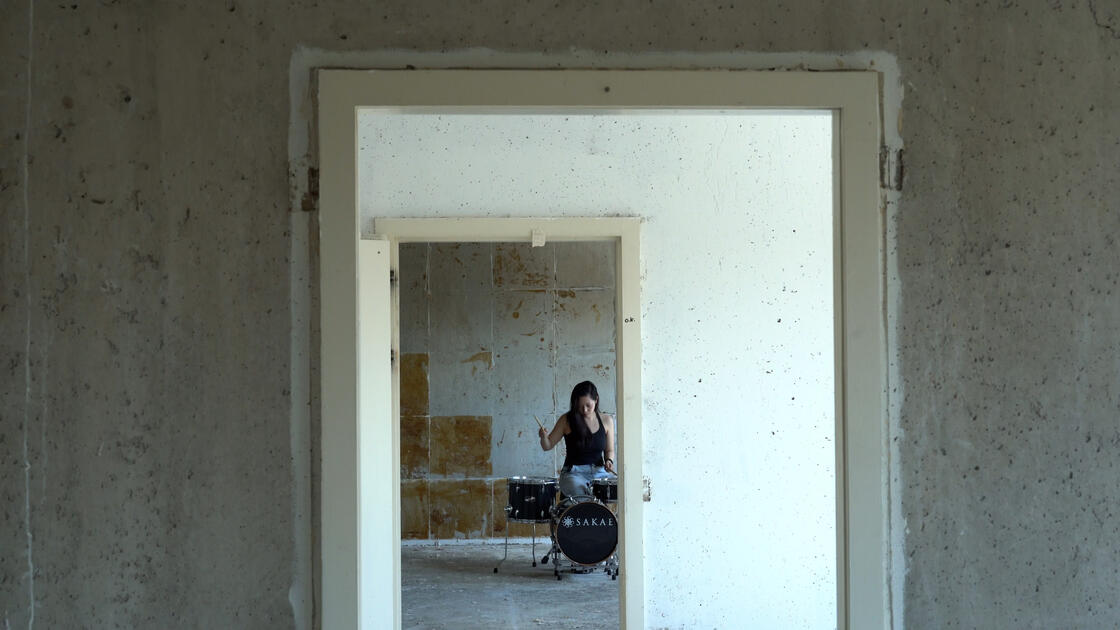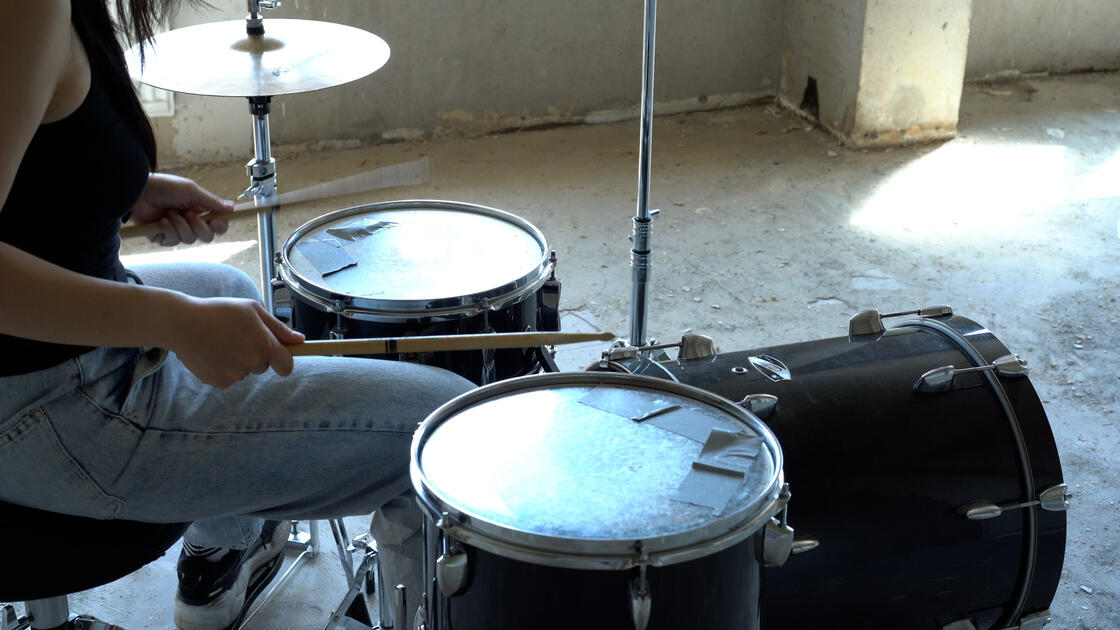Schrödingers Katzen
Eine Veranstaltung vor Ort findet nicht statt
there will be no public event on site
Schrödinger's cat is a thought experiment in which a cat in a box may be considered at once dead and alive. (1)
Ludwig Wittgenstein wrote:
The item in the box does not belong to the language game at all, not even as something, because the box could also be empty.
Studioarbeit im Zeitraffer
Studierende und angehende Künstler:innen dokumentieren individuelle Erfahrungen eines realphysischen, zeitlich beschränkten Lebens-/Aktions- und Handlungsraums über mediale Transaktionen, von den Digital-Natives an die Digital-Refugees. Teilnehmende sensibilisieren sich für zeitlich begrenzte Aufenthalte. Die eigene Wahrnehmung (sei es aktiv, indem z.B. eine Wand gestrichen wird, oder in einer kollektiv arrangierten Abfolge auf sich beziehender Interaktionen, oder kontemplierend, indem man eine Stunde auf dem Boden sitzt oder für zwei Sekunden einen Seufzer in den Raum pustet) ist Arbeitsgrundlage.
Dieser Prozess ist sowohl Inhalt wie Werkstoff zu vitaler, individueller Erfahrung, die weder emotional noch rational gedeutet wird, aber dem Umgang mit sozialen Medien gegenüber steht, die unkontrolliert, territorial und massenwirksam überall eindringen.
schrödingers katzen befinden sich in einem entkernten und nicht für die Öffentlichkeit zugänglichen Gebäude - aber einem Ort der Planung einer nachhaltigen künstlerischen Produktion.
Die Resultate können zwischen dem 9. und 12.Juli 2021 vor Ort jeweils mit einer einzelnen physisch anwesenden Person, in zugewiesenen Zeitfenstern, real besichtigt werden.
Studio work in time lapse
Students and emerging artists document individual experiences of a real-physical, time-limited space for living and action through media transactions of artistic activity, from the digital natives to the digital refugees.
Participants raise their awareness within a temporary stopover. The perception (be it active, e.g. by painting a wall, or in collectively arranged sequences of interlaced actions or contemplating, by sitting on the floor for an hour or just blowing a sigh into the room for two seconds) becomes the basis of work. This process is both content and material for a vital, individual experience that is neither interpreted emotionally nor rationally, but contrasts with the use of social media that penetrate uncontrolled, territorially and massively everywhere.
schrödingers katzen take place in a gutted building that is not open to the public - but where there are plans for sustainable artistic production.
The results can be viewed on site between July 9th and 12th, 2021 with a single person physically present, in assigned time-slots.
Organisation: Prof. Hannes Brunner and Ulrike Mohr.
sonntag, 11.07 – 11am-11pm
W E C H S E L R A U M: Der Begriff »Wechselraum« definiert bei einem Staffellauf den Bereich, in dem eine Läufer:in den Stab an die nächste Läufer:in übergibt. WECHSELRAUM ist ein interdisziplinäres, kollaboratives Projekt von Studierenden der Weißensee Kunsthochschule Berlin und Ulrike Mohr. Während der gesamten Dauer von 11 Stunden wird ein permanenter Transformationsprozess stattfinden. Die vorhandene Materialität eines definierten Halbkreises im Aussenraum ist Ausgangspunkt für die gemeinsame Beschäftigung mit aktuellen Zeit- und Raumphänomenen.
Zeit: Sonntag, 11 Juli um 11:00, 12:00, 13:00, 14:00, 15:00, 16:00, 17:00, 18:00, 19:00, 20:00, 21:00, und 22:00.
Ort: schrödingers katzen, Halbkreis vor dem Gebäude
Die Aktion ist nicht öffentlich und kann Online über Zoom und Webseite mitverfolgt werden. Für mehr Information siehe
wechselraum.carrd.co/.
sunday, 11.07 – 11am-11pm
W E C H S E L R A U M - In a relay race, the term "Wechselraum" defines the area in which one runner passes the baton to the next runner. WECHSELRAUM is an interdisciplinary, collaborative project by students of the Weißensee Kunsthochschule Berlin und Ulrike Mohr. For the continunous duration of 11 hours, a permanent transformation process will take place. The existing materiality of a defined semicircle outside is the starting point for the common engagement with current time and space phenomena.
Time: Sun, 11 Juli at 11am, 12am, 1pm, 2pm, 3pm, 4pm, 5pm, 6pm, 7pm, 8pm, 9pm, and 10pm.
Location: schrödingers katzen, semicircle in front of the building.
The activity is not open to the public but it will be livestreamed on Zoom and documented online: see wechselraum.carrd.co/ for access.
projects | projekte
stimmen der künstler:innen
works on view
all works and artists and listed in the same order as the images above.
Haleen Lee, Tegel Airport 2050, 2020
Haleen Lee, Czech Embassy, 2021
Haleen Lee, Red Reflection, 2021
(Photos: Olga Shalashova)
Coline Rousteau, Make a buffer, 2020. (Photos: Olga Shalashova)
Mona Schmidtke, Regen (Arbeitstitel) – Gut für die Pflanzen!, 2021
Raras Umaratih, tktk, 2021. (Photos: Olga Shalashova)
Olga Shalashova, What will you do with all this stability?, 2021
Stefan Pfattner, tktk, 2021. (Photos: Olga Shalashova)
Dhan Fabbri, Luceforma, 2021
Dhan Fabbri, Fountain, 2020
Dhan Fabbri, Acquargentata, 2020
Yunsun Kim, Under your skin, 2021.
Marie Lempelius, Ich bin gelangweilt von mir selbst, 2021
Lydia Belevich, Coccyx 8, 2021
Daniela Villalobos, Se pone todo borroso al final / It gets all blurry at the end , 2019-2021. (Photos: Olga Shalashova.)
Wiktoria Łaskawiec, WE MUST HAVE TIME, 2021. (Photos: Olga Shalashova)
Keanu Sapadi, O.T., 2021
Julius Voigt, Sketch of a Video of a Sketch, 2021
Lara Rocho, Textile feeling on 10m2, 2021. (Photos: Olga Shalashova)
Fadi Aljabour, The answer, 2021. (Photos: Olga Shalashova)
Susanne Weber-Lehrfeld, ROTE BUCHSTABEN TEIL 2, 2021
Fred Unruh, Zwei schnelle Lügen, 2021
Giang Quang Vinh, L'ORIGINE DU MOT "PHO", 2021. (Photos: Olga Shalashova)
Yan Li, Modell der Energie, 2018/2021
Marthe Howitz, Aufbau Ost, 2021
Maïa Kleinknecht, Ceija Stojka 2021. (Photos: Dhan Fabbri)
Nikolas Eckl, a proxima, 2021
Paul Gehri, House made of butter, 2021
Marina Resende, Bodenwirtschaft (mit Hopfen für Johan), 2021
Arin Ismail, The Skin of Milk, 2021
Sissel Hartvigsen, Monuments to flow in the stream, 2021
Nina Plaskova, Dialog der Eingelegten - Erweiterte Dialoge, 2021
Shulamith Weisz Quinn, 2021
Chia-Liang Lai, Drumming Is My Voice, 2021
(1) Schrödinger’s cat is a thought experiment […], in which a hypothetical cat may be considered simultaneously both alive and dead as a result of its fate being linked to a random subatomic event that may or may not occur. This experiment was devised by physicist Erwin Schrödinger in 1935, a discussion with Albert Einstein, to illustrate the problems of the Copenhagen interpretation of quantum mechanics. This thought experiment makes apparent the fact that the nature of measurement, or observation, is not well-defined in this interpretation.
Erwin Schrödinger wrote: »A cat is penned up in a steel chamber, along with the following device (which must be secured against direct interference by the cat): in a Geiger counter, there is a tiny bit of radioactive substance, so small, that perhaps in the course of the hour one of the atoms decays, but also, with equal probability, perhaps none; if it happens, the counter tube discharges and through a relay releases a hammer that shatters a small flask of hydrocyanic acid. If one has left this entire system to itself for an hour, one would say that the cat still lives if meanwhile no atom has decayed. The first atomic decay would have poisoned it. The psi-function of the entire system would express this by having in it the living and dead cat (pardon the expression) mixed or smeared out in equal parts. […] If the cat survives, it remembers only being alive. But explanations of the EPR experiments that are consistent with standard microscopic quantum mechanics require that macroscopic objects, such as cats and notebooks, do not always have unique classical descriptions. The thought experiment illustrates this apparent paradox.«
Source: Wikipedia.
© Tessier-Ashpool S.A. All rights reserved.
